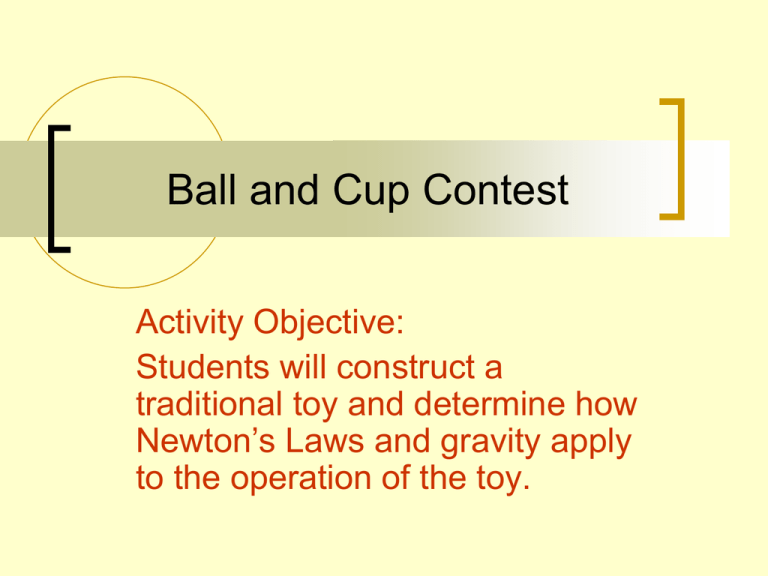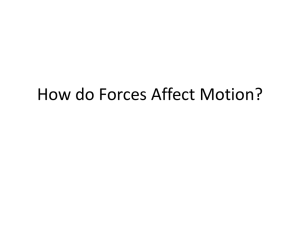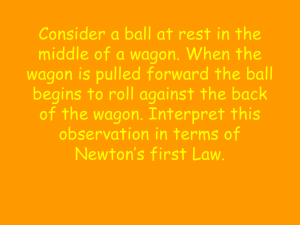Activity 6 Ball and Cup Contest
advertisement

Ball and Cup Contest Activity Objective: Students will construct a traditional toy and determine how Newton’s Laws and gravity apply to the operation of the toy. What is Microgravity? This is a term NASA uses to describe the almost weightless condition in the in-orbit environment. Have you ever played with a ball and cup? What techniques did you use to capture the ball? Activity Materials: ruler, paper cup, wooden stick, string, and a ping pong ball Work in groups of 2 Complete Activity sheet 6 Questions 1-4 (do not go on to question 5 until instructed) How does gravity affect the ball and cup? Gravity pulls the ball down into the cup and keeps the ball from bouncing out of the cup. How do Newton’s Laws Explain the Movement of the Ball? As you swing the ball around on the string, the string pulls inward on the ball. According to Newton’s first law, the ball would continue in a straight path if a force is not acting on it. According to Newton’s second law, an object moves in the direction of the force that it experiences. The ball moves in the direction that the string pulls on it. (results in a circular motion) Circular Motion and Newton’s 3rd Law An inward force is required to continually turn an object from its straight-line path. Any inward-acting force is call Centripetal Force. In this activity, the string pulling inward on the ball provides the centripetal force. According to Newton’s 3rd Law, there is an equal and opposite reaction (force of the ball pulling back on the string) Gravity and Space Gravity also plays a role in the ball and cup toy. As the ball reaches the peak of the toss, it begins to free fall and is caught in the cup, where gravity holds it. The cup applies an equal and opposite (upward) force to the ball, which is countered by gravity on Earth (Newton’s 3rd Law) In space, the ball would strike the bottom of the cup and bounce out again. Newton’s 3rd Law predicts this (there is an equal and opposite reaction force)








